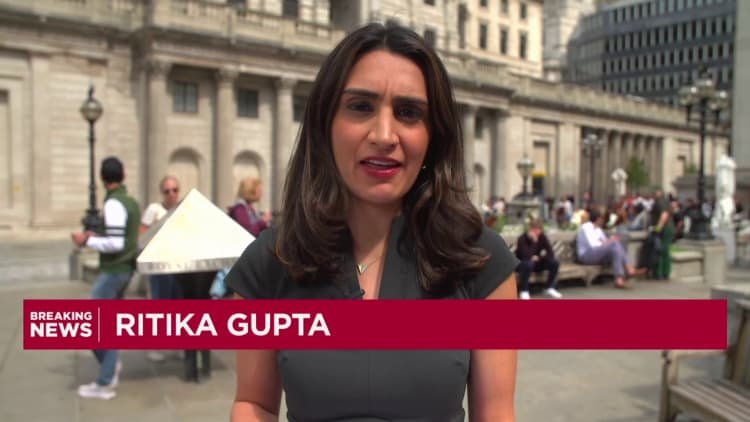Bank of England Lowers Interest Rates to 4%
The Bank of England (BoE) has made a notable decision to reduce interest rates from 4.25% to 4%, marking a return to what it describes as a "gradual and careful" approach to easing monetary policy. This announcement came through during its latest monetary policy meeting, where economists had predicted a reduction of 25 basis points.
Voting Dynamics at the BoE
In a narrow vote, the nine-member Monetary Policy Committee (MPC) decided to lower the "Bank Rate" by 25 basis points, with a split of 5-4. This decision led to a slight increase in the British pound, which rose by 0.5% against the U.S. dollar, reaching $1.3424. The policymakers’ discussions were influenced by persistent inflation, as indicated by the consumer price index (CPI), which unexpectedly increased to 3.6% in June from 3.4% in May. Meanwhile, the U.K.’s gross domestic product (GDP) showed a decline of 0.1% month-on-month in May.
In a statement, the BoE reiterated its commitment to curbing any existing or emerging inflationary pressures to achieve a sustainable return to its 2% inflation target over the medium term. Initially, the MPC had differing opinions on whether to hold rates steady or cut them, necessitating a second round of voting to come to a consensus.
Future Trajectory of Interest Rates
Economists anticipate that the trend of lowering interest rates may persist into the upcoming year. However, the BoE has emphasized that a careful and gradual approach to withdrawing monetary policy restraints remains paramount. The timing and pace of potential rate reductions will heavily depend on the degree to which underlying disinflationary forces continue to develop.
Insights from BoE Officials
Governor Andrew Bailey highlighted the necessity of a prudential approach, stating, "It remains important that we do not cut the bank rate too quickly or by too much." He expressed cautious optimism, suggesting the rise in headline inflation may not be sustained in the long run. Meanwhile, U.K. Chancellor Rachel Reeves welcomed the cut, viewing it as beneficial in reducing costs for mortgages and loans affecting families and businesses.
Economic Considerations
Senior economist George Brown from Schroders noted that the most recent rate cut did not come as a shock but pointed out the complex landscape moving forward. With conflicting data regarding jobs, growth, and inflation, he supported the MPC’s decision to proceed cautiously. He suggested that while the labor market’s uncertainty could lead to another rate cut in November, justifying such a move would depend on clear signs of disinflation.
Some analysts, however, consider a more aggressive cut possible. Ashley Webb, a U.K. economist at Capital Economics, predicted that despite rising CPI inflation in June, an overall weakening labor market would ultimately lead to a slowdown in wage growth and inflation aligning with the targeted 2%. He projected that interest rates could decline further to 3.00% by 2026.
Labor Market Concerns
Economists view the labor market as a crucial element influencing the BoE’s decisions. Nevertheless, they caution that no definitive signs indicate a significant downturn in employment figures. ING analysts noted the ongoing uncertainty, observing that more potential weakness in the jobs market might not be immediate but could be on the horizon.
The hospitality sector appears to be absorbing much of the recent employment dips, facing challenges from increased government taxation and payroll taxes. Although payrolled employee numbers have declined in several months, analysts believe the situation is evolving slowly. They pointed out a lack of a decisive factor capable of prompting a dramatic shift in the BoE’s economic outlook just yet, while inflation metrics continue to present challenges.
The economic landscape remains intricate as policymakers navigate a balance between addressing inflation concerns and responding to labor market conditions. The next steps from the Bank of England will be closely monitored as they determine the best path forward in a changing economic environment.
